In this comprehensive guide to SEO for tradesmen, I’ll be showing you 25 quick, easy, and effective ways to boost your business’s visibility in search results, drive more visitors to your website, and turn those visitors into paying customers.
In today’s digital age, more people than ever before are turning to search engines like Google to find local tradesmen to fix their problems. In fact, some 97% of users search online to find local businesses, resulting in over a billion searches per month which include the phrase “near me.”
To put that another way, imagine how much business you’re missing out on by not using Search Engine Optimization to ensure that when users search for “plumbers near me” or “electricians near me,” it’s you they find.
Whether you’re a seasoned tradesman with an established online presence or just starting, these SEO wins will help you to stand out in search engine results pages and attract more customers to your trade business.
SEO For Tradesmen: Content Optimization
1. Conduct Keyword Research

Keyword research is the foundation of successful SEO, helping you to identify relevant keywords for your business and optimize your content accordingly.
There’s a whole host of top free keyword research tools you can use to help with this. My favorites are:
To get the most out of these tools, I recommend reading my guide called How to Do Local Keyword Research.
If you don’t have time for that right, let me show you one quick and easy way to do it.
How to Do Keyword Research on Google Search Console
Google Search Console is a powerful tool that can help you find low-hanging fruit keywords to improve your website’s organic search performance.
Here’s how you can use it:
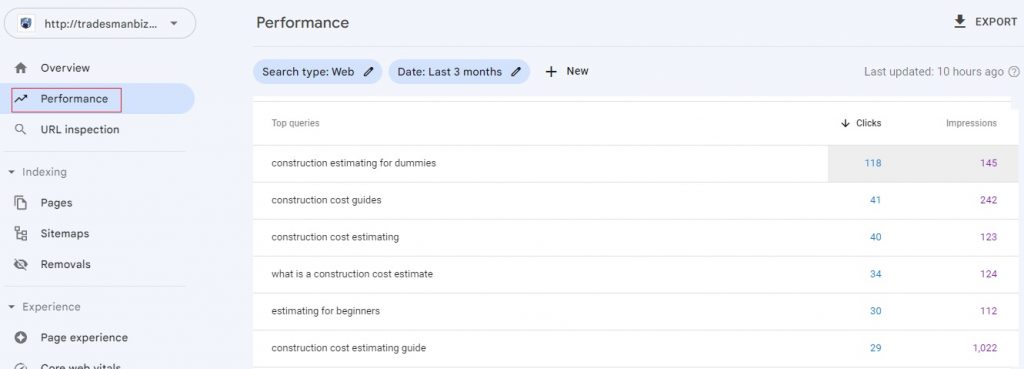
- Log in to your Google Search Console account and navigate to the “Performance” report.
- Click on “Queries” to view the keywords that people are using to find your website.
- Sort the keywords by the number of impressions they receive. This will give you an idea of the most popular keywords that your website is currently ranking for.
- Look for keywords that have a high number of impressions but a low click-through rate (CTR). These keywords are opportunities for improvement, as they indicate that people are seeing your website in search results but not clicking through to it.
- Click on a keyword to view more details about its performance. Look for opportunities to optimize your content and meta tags to improve your rankings for that keyword.
- Use the “Pages” tab to view the pages on your website that are ranking for each keyword. Look for opportunities to improve the content and meta tags on those pages to improve their rankings.
- Consider creating new content that targets low-hanging fruit keywords with high search volume and low competition. Use keyword research tools to find related keywords and topics that you can create content around.
By using Google Search Console to find low-hanging fruit keywords, you can identify opportunities for improvement and optimize your website’s content to improve its rankings and drive more organic search traffic.
2. Optimize Page Titles and Meta Descriptions

Page titles and meta descriptions are critical components of a website’s on-page SEO strategy. They are the first thing that users see in search engine results, and they play an essential role in attracting visitors to your website.
Page titles should accurately reflect the content of the page and contain the primary target keyword for that page. They should be concise and engaging to entice users to click through to your website. It’s important to avoid using duplicate page titles, as this can confuse search engines and hurt your website’s ranking.
Meta descriptions should provide a brief summary of the page’s content and include relevant keywords. They should also be engaging and informative, providing users with a reason to click through to your website. Meta descriptions should be unique for each page on your website, and they should be kept under 155-160 characters to ensure they are fully displayed in search engine results.
See How to Optimize your page titles and meta description for more help with this.
3. Use Header Tags Properly
Header tags (H1, H2, H3, etc.) help search engines understand the structure and hierarchy of your content.
Use header tags properly to make your content more readable and accessible to search engines.
4. Include Internal Links:
Internal linking is an essential part of SEO. Use internal links to connect related content on your site, making it easier for users and search engines to navigate.
5. Optimize Images:
Optimize your images by compressing their file size, adding alt text, and using descriptive file names. Image optimization can improve your site’s load time and help search engines understand your content better.
6. Add a Table of Contents
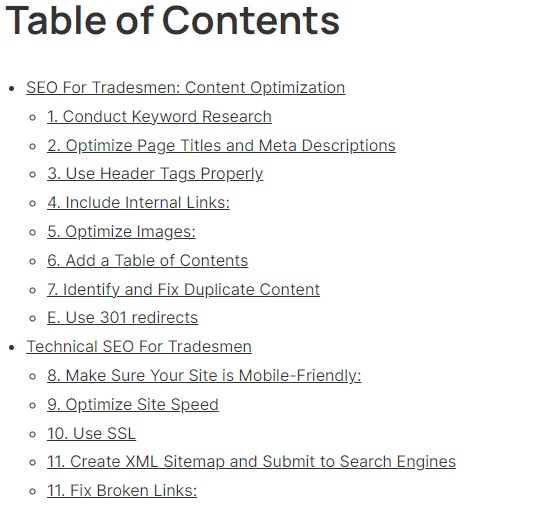
Adding a table of contents to your website can help you win Google site links, which are the additional links that sometimes appear below a website’s main search result in Google search results pages.
How to Add a Table of Contents to Your Website
Choose a plugin or tool that can generate a table of contents for your website automatically. Some popular options include:
Install the plugin or tool on your website and activate it.
Configure the settings to match your preferences. Most table of contents plugins will let you choose which headings to include and how to style the table of contents.
Add the table of contents to your website. Depending on the plugin or tool you’re using, you may need to add a shortcode or widget to your pages or posts to display the table of contents.
With your table of contents added, you stand a better chance of winning those coveted site links, boosting your website’s visibility, and making it easier for users to find the information they’re looking for.
7. Identify and Fix Duplicate Content
Duplicate content can be a major issue for SEO because it confuses search engines and dilutes the relevance of your content.
To fix duplicate content issues, follow these steps:
A. Identify the source of the duplication
You can use tools like Copyscape or Siteliner to check for duplicate content on your site. Additionally, you can use Google Search Console to find URLs that are showing duplicate content.
B. Decide which version of the content you want to keep
Once you’ve identified the duplicate content, decide which version of the content you want to keep. This will be the original content that you want to rank in search engines.
C. Remove or redirect the duplicate content
If the duplicate content is on your own site, remove it or redirect it to the original content. If the duplicate content is on another site, you can try reaching out to the site owner and ask them to remove it or provide a canonical link to the original content.
D. Use canonical tags
To avoid duplicate content issues, you can use canonical tags to indicate to search engines which version of the content you want to rank. The canonical tag is an HTML element that tells search engines which version of a URL is the “main” version. Place the canonical tag in the head section of your web page.
E. Use 301 redirects
If you have duplicate content on your site, use 301 redirects to direct visitors to the original content. A 301 redirect is a permanent redirect that tells search engines that the original content has moved to a new location.
By following these steps, you can fix duplicate content issues on your site and improve your SEO.
Technical SEO For Tradesmen
8. Make Sure Your Site is Mobile-Friendly

If you only do one thing as a result of reading this guide to SEO for tradesmen, please let it be this one.
Over 90% of Internet users access the web on their mobile, accounting for well over half of all Internet traffic.
What’s more, some 61% of mobile users are more likely to contact a local business if it has a mobile-friendly website.
When you look at the numbers, it’s pretty obvious why having a mobile-friendly website for your tradesman business matters. If your site doesn’t deliver the same smooth, user-friendly experience on an iPhone or tablet as your desktop version, you’re simply losing business.
9. Optimize Site Speed
Site speed refers to the amount of time it takes for a website to load its content, including images, text, and other multimedia. It is a crucial factor in SEO because Google and other search engines prioritize fast-loading websites over slower ones. Fast-loading websites provide a better user experience and are more likely to be visited and shared by users.
In addition to improving search engine rankings, optimizing site speed can also lead to higher conversion rates and improved user engagement. Studies have shown that even a one-second delay in website loading time can result in a significant decrease in page views, user satisfaction, and conversion rates.
There are several techniques for optimizing site speed, including:
- Compressing images and other multimedia to reduce the file size
- Minimizing the number of HTTP requests by reducing the number of resources needed to load a page
- Enabling browser caching to store frequently accessed resources on the user’s computer
- Minimizing CSS and JavaScript files to reduce file size and improve load times
- Using a content delivery network (CDN) to store and deliver website content from multiple servers around the world, reducing the distance between the user and the server and improving load times.
By optimizing site speed, website owners can improve their website’s performance, search engine rankings, and user engagement, ultimately leading to increased traffic and revenue for their business.
10. Use SSL
Here’s where things start to get a little technical.
SSL, or Secure Sockets Layer, is a protocol that encrypts data between a user’s browser and a website’s server. It is used to secure online transactions and protect sensitive information such as credit card details, usernames, and passwords.
For you as a tradesman, having an SSL certificate on their website is crucial for building trust with your customers.
If you allow clients to contact you via website, and especially if you collect payments online, you’ll need an SSL certificate to ensure that sensitive information such as contact details, project information, and payment details are secure and protected. This can improve the customer’s confidence in your level of professionalism and your ability to handle each project with care.
Getting an SSL certificate is a relatively straightforward process. Many web hosting companies offer SSL certificates as part of their hosting packages, and some even offer free SSL certificates.
11. Create XML Sitemap and Submit to Search Engines
An XML sitemap is a basic but essential component of SEO for tradesmen. It’s a file that lists all the pages on your site so that search engine crawlers can understand more about your site and it’s structure.
This helps those search engines to index your site more effectively, resulting in improved rankings and more targeted organic traffic.
12. Fix Broken Links
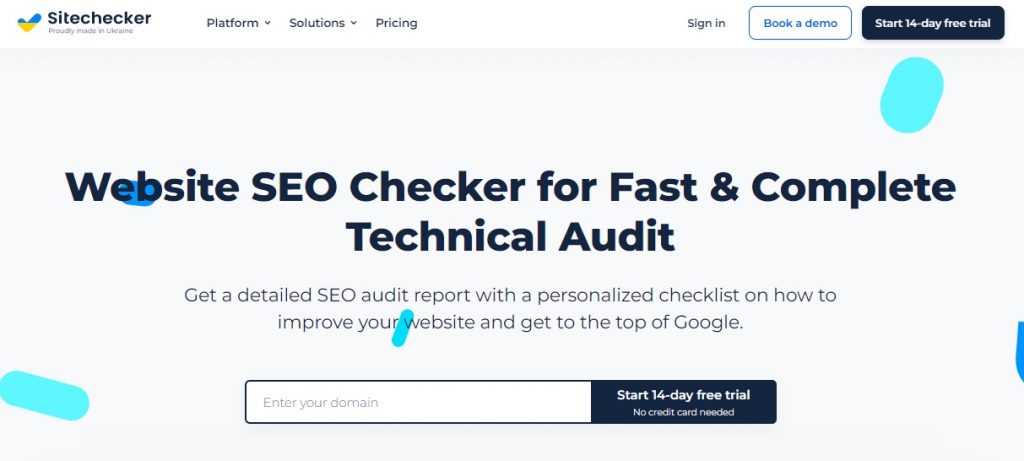
Broken links can harm your site’s user experience and hurt your rankings, so it’s essential to tackle them as soon as possible.
The good news is that there are a bunch of free and premium broken link checker tools you can use to make this part of tradesmen SEO as simple as possible. These tools include:
13. Add Breadcrumbs to Improve Navigation
Adding breadcrumbs to your website is another useful step that can help you land Google site links, making your tradesman’s website more visible in search results and giving you more opportunities to drive traffic to your website.
Breadcrumbs are a navigation trail that shows users the path they took to reach a particular page on your website. Here’s how to add breadcrumbs to your website:
There are a number of popular tools that can help with this, including:
Install the plugin or tool on your website and activate it.
Configure the settings to match your preferences. Most breadcrumb plugins will let you choose the style, location, and depth of your breadcrumbs.
Add the breadcrumbs to your website. Depending on the plugin or tool you’re using, you may need to add a shortcode or widget to your pages or posts to display the breadcrumbs.
Local SEO For Tradesmen
14. Claim Your Google My Business Profile
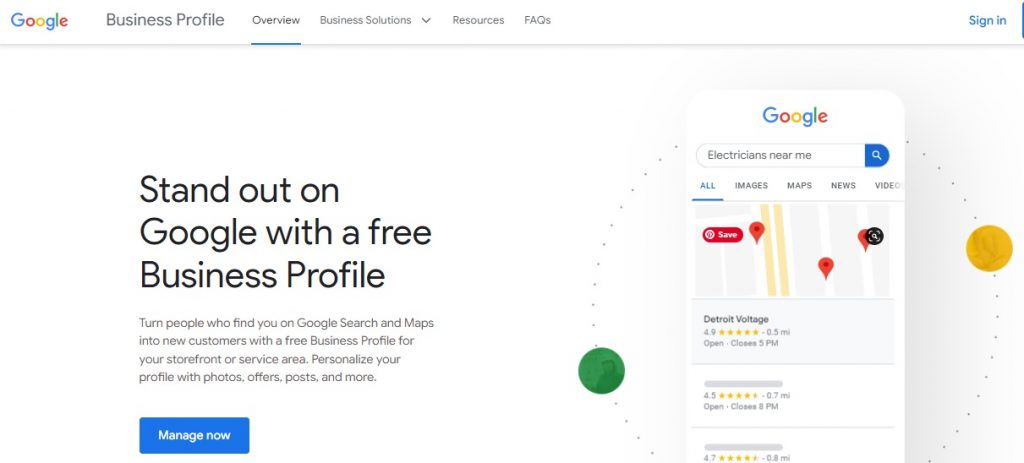
Google My Business is a free tool that businesses can use to manage their online presence across Google, including search and maps. Claiming your Google My Business profile can help you appear in local search results.
15. Use Local Keywords
Include location-specific keywords in your content to target local searchers. For example, use “best restaurants in Seattle” instead of “best restaurants.”
16. Get Listed on Relevant Directories
Directories are websites that list businesses by category and location, making it easier for potential customers to find you. By getting your business listed on directories that are relevant to your niche and location, you can increase your online visibility and attract more customers.
For example, if you’re a plumber in New York, you could look for directories that list plumbers in the New York area. Once you’ve identified some directories, make sure to follow their submission guidelines and provide accurate and complete information about your business.
This typically includes your business name, address, phone number, website URL, and a brief description of your services. Some directories may also allow you to upload photos and videos to showcase your work.
17. Boost Your Backlink Profile With Local Citations
it’s vital to understand the importance of local citations in growing your business online. Local citations are mentions of your business’s name, address, and phone number (NAP) on relevant online directories and websites in your industry and location. Having accurate and consistent NAP information across these directories can help improve your local SEO, making it easier for potential customers in your area to find your business online.
One significant advantage of having local citations is the chance to earn free backlinks to your website.
Backlinks are links from other websites that lead to your website, and they are a crucial ranking factor in SEO. Search engines consider them a vote of confidence and authority, which can improve your website’s visibility and ranking in search results.
By having accurate and consistent NAP information on relevant directories, you can earn these valuable backlinks, which can help attract more traffic to your website and potentially increase your customer base.
Therefore, it’s essential for tradesmen to ensure that their NAP information is accurate and consistent on relevant directories to improve their local SEO and attract more customers in their area.
See Free Advertising for Plumbers: 12 Places to Promote Your Business for some useful suggestions on how to generate local citations for your tradesman business
Link Building SEO
18. Find Broken Links and Offer Your Content as a Replacement
Use the broken link checker tools we looked at earlier to identify broken links on other sites. Reach out to the site owner and offer your content as a replacement.
19. Guest Posting on Relevant Sites
Guest posting on relevant sites can help you build quality backlinks and increase your site’s authority. Ensure that your guest posts are informative and add value to the site’s audience.
20. Participate in Forums and Online Communities
Participating in forums and online communities can help you build relationships, establish your expertise, and get quality backlinks. Ensure that your contributions are valuable and relevant to the community.
21. Utilize Social Media
Social media can help you attract more traffic, engagement, and backlinks. Share your content on social media, engage with your followers, and participate in relevant conversations.
Analytics
Analytics plays a crucial role in tradesmen SEO as it helps you to understand the Return on Investment (ROI) you generate from your Search Engine Optimization efforts, identify areas of improvement, and make data-driven decisions about how to grow your business online.
Here are three quick wins related to analytics that businesses can implement:
22. Set up Google Analytics
Google Analytics is a free web analytics tool that provides valuable insights into website traffic, user behavior, and conversion rates.
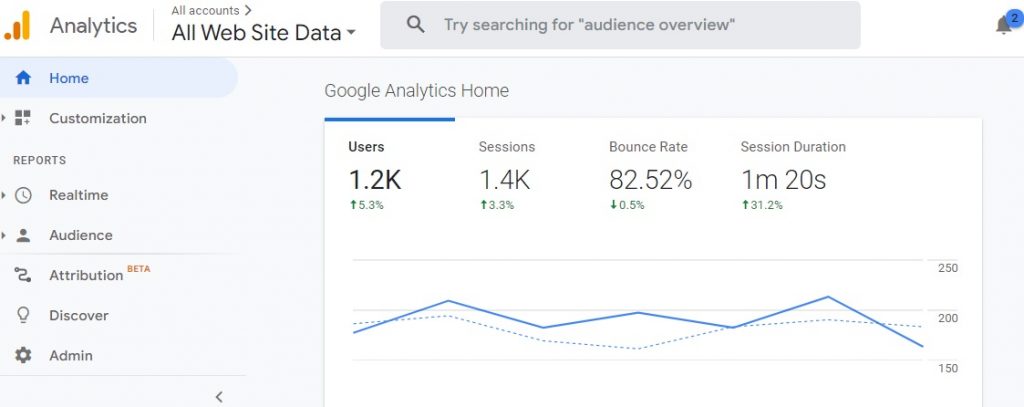
It’s easy to set up and can be integrated with other tools like Google Search Console to provide more comprehensive data.
23. Track and analyze traffic data
Once you have set up Google Analytics, it’s important to track and analyze your website’s traffic data regularly. Look at metrics like the number of sessions, pageviews, bounce rate, and average session duration to understand how users are interacting with your website.
24. Monitor rankings
It’s essential to monitor your website’s rankings regularly to understand how your SEO efforts are impacting your search visibility. Use tools like Google Search Console, Ahrefs, or SEMrush to track your rankings and identify opportunities for improvement.
BONUS: Two More Top Tradesman SEO Tips
25. Optimizing for Featured Snippets
Optimizing for Featured Snippets is a great way to increase your visibility in search engine results pages (SERPs). For help with this, see How to Win Featured Snippets for Your Plumbing Business.
26. Add Structured Data Markup to Your Website
Adding structured data markup to your website can provide search engines with additional information about your content and help them display richer snippets in search results.
Here are the steps to add structured data markup:
- Determine which types of structured data to use: The most common types of structured data are schema.org markup, which provides a vocabulary of tags that can be used to mark up various types of content on a website, and JSON-LD, a JavaScript-based format for structured data.
- Identify the pages to mark up: Choose the pages on your website that are the most important and relevant to your business. These may include product pages, service pages, and contact pages.
- Create the markup: There are several tools available that can help you create structured data markup, such as Google’s Structured Data Markup Helper. Use the tool to choose the content type and enter the relevant information for each page.
- Test the markup: Use Google’s Structured Data Testing Tool to ensure that your structured data markup is valid and that there are no errors.
- Add the markup to your website: Once you have tested and validated the markup, add it to the appropriate pages on your website. You can add the markup directly to the HTML code of the page, or use a plugin or extension to add it automatically.
Frequently Asked Questions About SEO for Tradesmen
How much will SEO cost my tradesman business?
The cost of SEO will all depend on multiple factors, including the tools you use and whether or not you hire an SEO specialist to help you out. It’s entirely possible to carry out your entire Search Engine Optimization efforts for under $50 using free tools, though if you have the budget to spend more, it will pay off if you follow the tips in this guide.
What is the one most essential part of SEO for Tradesmen?
If you only focus on one aspect of Search Engine Optimization to grow your tradesman business, local SEO should be it. Remember, you’re targeting local customers in your area, so anything you can do to quite literally get your business on the map will only help.
SEO for Tradesmen: What Next?
By implementing the strategies discussed in this guide to SEO for tradesmen, you can help your website rank higher in search engine results, attract more customers in your local area, and ultimately, grow your business.
Remember, SEO is not a one-time task but an ongoing process. Regularly monitoring your website’s performance and making necessary changes can help you stay ahead of the competition and continue to improve your online visibility. Don’t be afraid to experiment with different strategies and techniques to see what works best for your business.
Keep in mind that SEO is just one aspect of your overall marketing strategy. Utilizing other marketing channels, such as social media, email marketing, and local advertising, can also help you reach your target audience and drive more traffic to your website.
For more weekly advice on how to start, manage, and grow your business as a self-employed tradesperson or contractor, follow Tradesman Biz on Twitter, Facebook, or Linkedin.

Leave a Reply